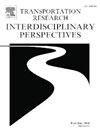儿童对自动驾驶汽车的看法:高保真原型的可用性和用户体验研究
IF 3.8
Q2 TRANSPORTATION
Transportation Research Interdisciplinary Perspectives
Pub Date : 2025-05-01
DOI:10.1016/j.trip.2025.101447
引用次数: 0
摘要
无人驾驶或自动驾驶汽车(AVs)有可能改善没有驾驶执照的儿童和年轻人的机动性,他们目前在日常生活中依赖于成年司机。在日常生活中为儿童和青少年提供无人陪伴的自动驾驶交通工具,一个必不可少的先决条件是他们可以在没有他人支持的情况下操作这种自动驾驶汽车。因此,我们进行了一项可用性研究,让孩子们(在父母的支持下)测试家庭AV“autoELF”的高保真原型。15位家长和17位7到14岁的孩子在实验室里测试了自动驾驶样机。在想象的乘车过程中,孩子们使用了在正常乘车过程中操作AV所需的安全和娱乐功能。在会后的采访中,孩子们报告了他们作为用户的经历。儿童和家长被问及他们是否愿意将自动驾驶融入他们的家庭交通。研究的主要发现是,孩子们能够将他们目前与汽车和技术互动的知识转移到新的自动驾驶环境中。大多数孩子能够在没有父母帮助的情况下使用AV的大部分功能,并且在第一次尝试时,孩子们已经熟悉了任务。图标和文字关键词帮助儿童理解车辆的特点和功能。该研究为自动驾驶汽车儿童友好用户界面的设计提供了实用建议。本文章由计算机程序翻译,如有差异,请以英文原文为准。
Children’s perspectives on autonomous vehicles: A usability and user experience study in a high-fidelity prototype
Driverless or autonomous vehicles (AVs) have the potential to improve the mobility of children and young people without a driver’s license, who are currently dependent on adult drivers in everyday life. An essential prerequisite for offering children and adolescents autonomous rides for unaccompanied transportation in everyday life is that they can operate such an AV without the support of others. We therefore conducted a usability study in which children (supported by their parents) tested the high-fidelity prototype of the family AV “autoELF”. Fifteen parents and seventeen of their 7- to 14-year-old children tested the AV prototype in the laboratory. During an imaginary ride, the children used the safety and entertainment features required to operate the AV during a normal ride. In a post-session interview, the children reported on their experiences as users. Children and parents were asked about their willingness to integrate AV into their family’s mobility. The main findings were that the children were able to transfer their knowledge from their current interaction with cars and technology to the new AV context. Most children were able to use most of the AV’s features without help from their parents and on the first try, when the children were already familiar with the task. Icons and written keywords supported children’s understanding of the vehicle features and their functionality. The study provides practical recommendations for the design of child-friendly user interfaces in AVs.
求助全文
通过发布文献求助,成功后即可免费获取论文全文。
去求助
来源期刊

Transportation Research Interdisciplinary Perspectives
Engineering-Automotive Engineering
CiteScore
12.90
自引率
0.00%
发文量
185
审稿时长
22 weeks
 求助内容:
求助内容: 应助结果提醒方式:
应助结果提醒方式:


